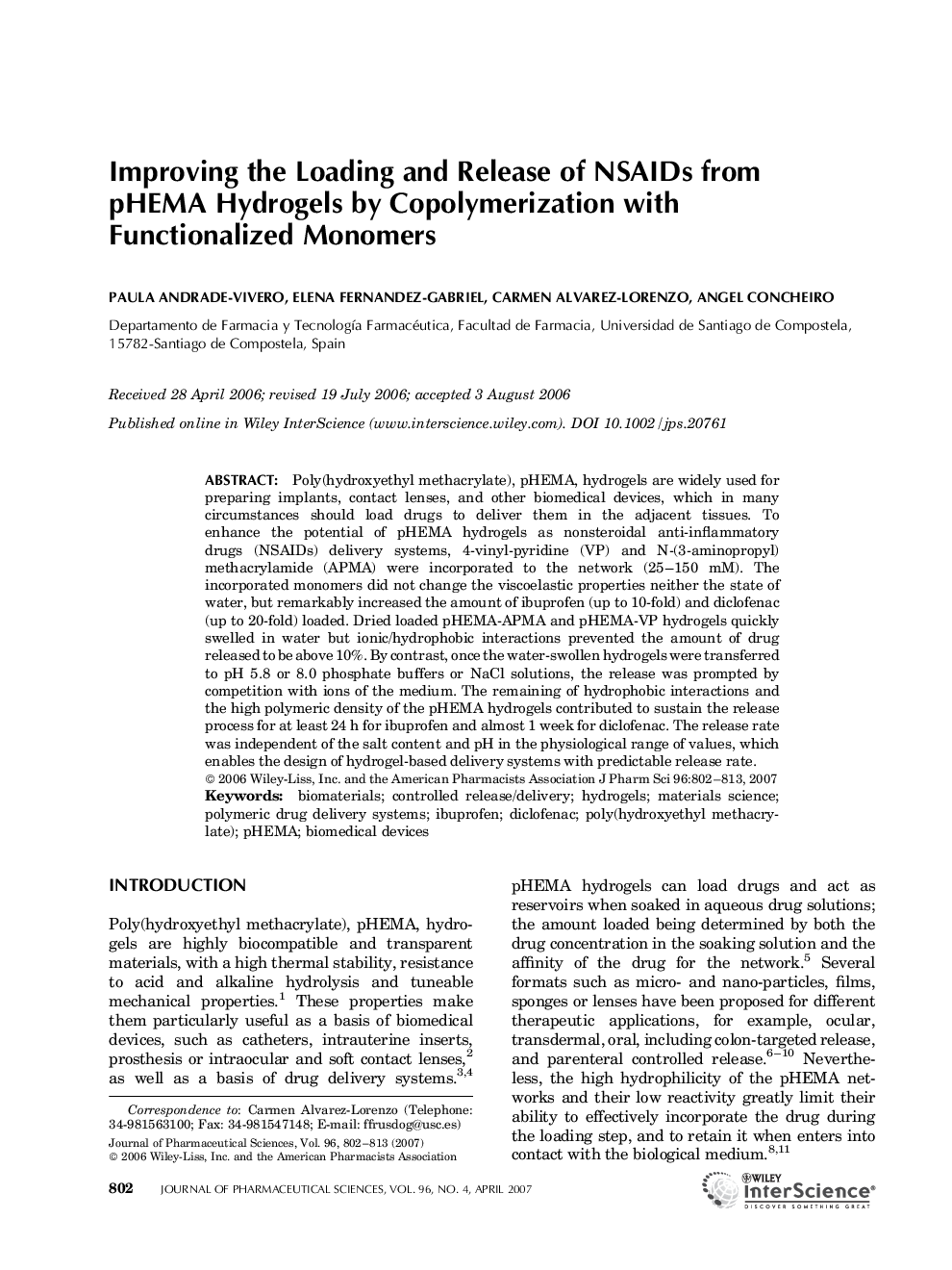| Article ID | Journal | Published Year | Pages | File Type |
|---|---|---|---|---|
| 2487750 | Journal of Pharmaceutical Sciences | 2007 | 12 Pages |
Abstract
Poly(hydroxyethyl methacrylate), pHEMA, hydrogels are widely used for preparing implants, contact lenses, and other biomedical devices, which in many circumstances should load drugs to deliver them in the adjacent tissues. To enhance the potential of pHEMA hydrogels as nonsteroidal anti-inflammatory drugs (NSAIDs) delivery systems, 4-vinyl-pyridine (VP) and N-(3-aminopropyl) methacrylamide (APMA) were incorporated to the network (25-150 mM). The incorporated monomers did not change the viscoelastic properties neither the state of water, but remarkably increased the amount of ibuprofen (up to 10-fold) and diclofenac (up to 20-fold) loaded. Dried loaded pHEMA-APMA and pHEMA-VP hydrogels quickly swelled in water but ionic/hydrophobic interactions prevented the amount of drug released to be above 10%. By contrast, once the water-swollen hydrogels were transferred to pH 5.8 or 8.0 phosphate buffers or NaCl solutions, the release was prompted by competition with ions of the medium. The remaining of hydrophobic interactions and the high polymeric density of the pHEMA hydrogels contributed to sustain the release process for at least 24Â h for ibuprofen and almost 1 week for diclofenac. The release rate was independent of the salt content and pH in the physiological range of values, which enables the design of hydrogel-based delivery systems with predictable release rate.
Keywords
Related Topics
Health Sciences
Pharmacology, Toxicology and Pharmaceutical Science
Drug Discovery
Authors
Paula Andrade-Vivero, Elena Fernandez-Gabriel, Carmen Alvarez-Lorenzo, Angel Concheiro,
